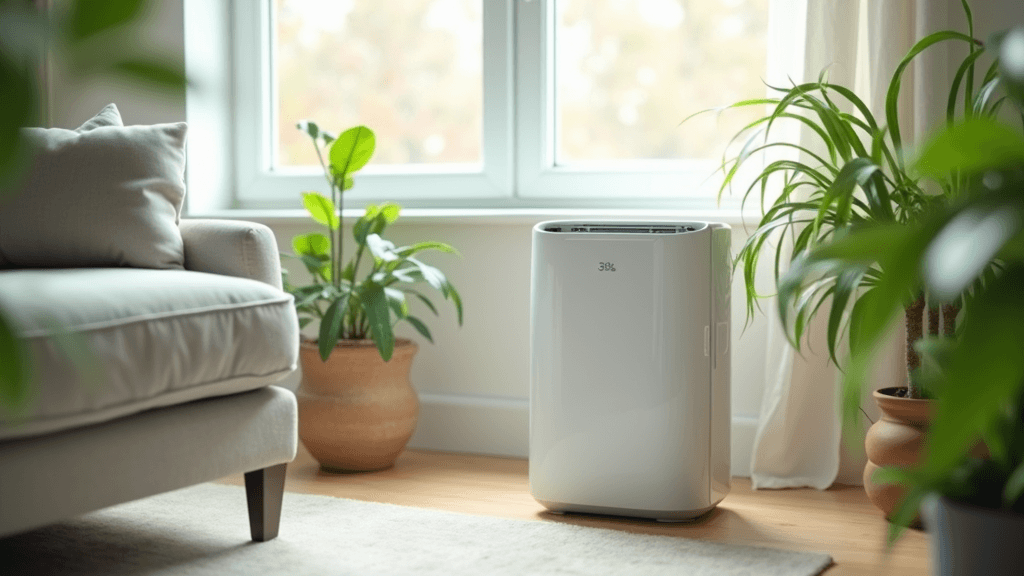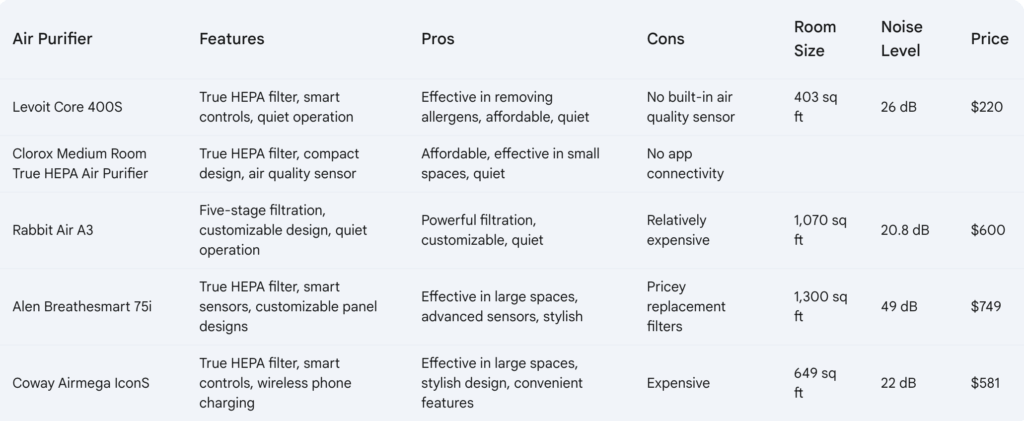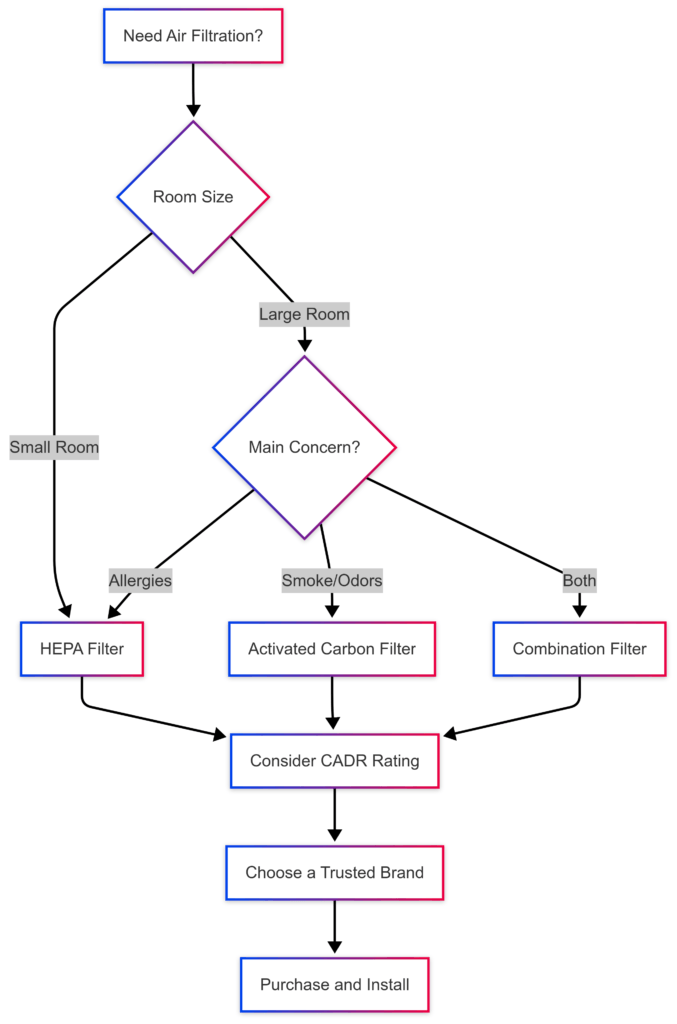Dealing with allergy symptoms at home can feel like a never-ending struggle, but smart air purifiers are really shaking things up for anyone who needs real relief. These devices combine traditional filtration with new technology, making them super effective for cutting down airborne triggers such as dust, pollen, pet dander, and mold spores. In this guide, I’m going to walk you through how smart air purifiers actually work, which features matter most, and some important things to consider before picking one up for your space. If you want to breathe easier at home, stick around—you’re in the right place.

Why Smart Air Purifiers Are a Game-Changer for Allergy Sufferers
Smart air purifiers are getting attention because they do more than just filter the air—they monitor, react, and adjust in real time. Traditional air purifiers have been around for a while, but the “smart” in smart air purifiers refers to sensors and online connectivity that help them respond to what’s going on in your environment without you needing to do anything.
Allergy symptoms can be triggered by microscopic particles floating in the air, like pollen, mold, dust mites, and even smoke. Smart air purifiers are built to spot spikes in these particles using their sensors and then ramp up their cleaning power automatically. Studies, such as ones from the American Academy of Allergy, Asthma & Immunology, show that using an air purifier with a HEPA filter can seriously reduce indoor allergens. With the addition of smart sensors and app controls, it’s easier to keep these triggers in check even when you’re not home. No more guessing about what’s in the air—you get clear info every time.
How Smart Air Purifiers Target Allergens Effectively
The real magic behind smart air purifiers comes from a mix of efficient filtration and clever automation. Here are some of the features that help them cut down indoor allergens so well:
- HEPA Filtration: The core element, HEPA filters, trap particles as small as 0.3 microns. This means they catch pollen, dust, dander, and mold spores before you ever breathe them in.
- Air Quality Sensors: Built-in sensors keep tabs on airborne contaminants and automatically adjust the filter speed. The unit “knows” when to kick into higher gear without you needing to do a thing.
- Automatic Modes: Smart purifiers can switch between low, medium, and high speeds depending on what their sensors find. This helps keep the air consistently clean.
- App Integration and Smart Scheduling: Control everything from your phone—schedule when your purifier runs, check air quality statistics, or get reminders when it’s time to change the filter. Very handy for keeping allergies under control around your daily routine.
- Voice Assistant Support: Connect with Alexa, Google Assistant, or Siri and control your purifier using simple voice commands.
Personally, I use a smart purifier in my bedroom, and it cranks up on its own during allergy season. I get real-time updates and suggestions on my phone, so I always know what’s going on with my air quality.
Quick Guide to Using Smart Air Purifiers for Allergy Relief
Setting up a smart air purifier in your home is only the first step—here’s how to use one properly for maximum allergy relief:
- Pick the Right Size: Make sure your purifier is meant for the room’s square footage. If it’s underpowered, it won’t be able to clean the air fast enough, and you won’t see real improvement.
- Smart Placement: Place your purifier where you spend the most time, like your bedroom or living room. Avoid pushing it into corners because it needs good airflow to work its best.
- Connect to Wi-Fi and App: Linking your device gives you access to convenient features, monitoring, and updates right on your phone.
- Use Automatic and Allergy Modes: Set your purifier to “auto” or “allergy” mode and let the sensors do their job. You don’t have to constantly adjust it yourself; the unit will step up when needed.
- Maintain Filters Regularly: Swapping or cleaning filters on schedule is essential. Many smart purifiers will remind you automatically—no more missing out on maintenance and having your allergies flare up.
Stick to this routine and you’ll keep your space clear of allergens while helping your purifier stay at peak efficiency. Don’t forget that regular vacuuming and keeping windows closed during high pollen times can give you an even bigger boost.

Features to Consider Before Buying a Smart Air Purifier
The smart air purifier market is packed with choices, and not all of them are designed with allergy sufferers in mind. Here are a few things I recommend focusing on to find the right fit:
- HEPA vs. True HEPA Filter: Always check for the “True HEPA” label—this means the filter captures at least 99.97% of the smallest allergens, unlike standard HEPA-style filters.
- Activated Carbon Layer: Very useful if odors, smoke, or chemicals bother your nose as well as traditional allergens. The carbon will grab these fumes, so you don’t have to smell or breathe them.
- Noise Level: If you’re sensitive to background noise, pay attention to decibel ratings. Many smart purifiers run super quietly on low settings but can get noticeably louder at max speed.
- App Quality: Some brands offer feature-packed apps with air quality history, schedule customization, and filter tracking, while others are pretty barebones. Check out some reviews to see which apps are actually helpful.
- Filter Replacement Cost: You’ll need to replace HEPA and carbon filters regularly, so look into how much they cost before buying to avoid unnecessary surprises down the road.
- Smart Home Integration: If you use smart home systems like Alexa or Google Home, confirm that your purifier will play nicely with your setup. That way, controlling your air purifier is just a voice command away.
Paying Attention to Room Size
Manufacturers always rate air purifiers for the room size they can clean, measured in square feet. Don’t go too small—if your purifier is underpowered for the space, you won’t see any real change in your allergy symptoms. Top models for bedrooms often cover larger open spaces, but always match the product to your main allergy zone for the best results.
Checking Clean Air Delivery Rate (CADR)
CADR ratings show how quickly the purifier can remove dust, pollen, and smoke from your air. Higher CADR numbers mean faster and more thorough cleaning. I always use CADR ratings to compare models before buying, and recommend others do the same for an objective measure of air cleaning power.
Everyday Allergens and How Smart Air Purifiers Help
The typical indoor culprits for allergy flare-ups tend to be:
- Pollen: Pollen blows in through open windows or comes inside on shoes and clothes, sticking around in the air for hours. Smart purifiers catch these fast, especially during peak allergy seasons.
- Dust Mites: Dust mites thrive in bedding, carpets, and upholstered furniture. HEPA filters lock them away and cut back on what’s blowing around the room.
- Pet Dander: Big issue for pet lovers. A good purifier can grab dander—those tiny skin flakes and hair particles—that trigger sneezing and itchiness.
- Mold Spores: Spores are virtually everywhere, but a strong filter can help during damp seasons or if your home has higher humidity.
- Smoke and Odors: Not exactly allergens, but they can irritate anyone struggling with allergies. Carbon filters are your best bet here.
The great thing about smart purifiers is that their sensors stay on alert, so they alert you and adjust the settings to clean the air as soon as it needs help.

FiltersFast.com has a mission to help change the way people think about and take action to purify water and air, in every home and workplace, locally and globally. With the help of our employees, customers, and partners, FiltersFast.com is a proud supporter of Wine to Water, the Cystic Fibrosis Foundation, and Habitat for
Humanity. LEARN MORE
Challenges and Tips for Maintaining Your Smart Air Purifier
Even the best purifiers need a little attention over time. Here are some top tips and common issues:
Filter Replacements
Your purifier is only as strong as its filters. Make a habit of changing them on schedule. Most smart devices will notify you, but keeping a backup filter handy is a smart move. I ignored a replacement alert once, and my allergies got worse fast; new filter, problem solved.
Sensor Maintenance
Dirt and dust can settle on sensors, causing less accurate readings. Gently wipe the sensor area occasionally and check the manual for deeper cleaning tips to make sure your purifier is always working at its best.
Running Your Purifier 24/7
Keeping your unit running on low all the time is efficient and helps avoid sudden spikes in allergens. Most purifiers are very efficient and won’t use much electricity, so your power bill won’t be sky high either.

Powerful HEPA Air Purifier Removes 99.9% of airborne pollutants for cleaner, healthier air.
Buy NowFAQs About Smart Air Purifiers and Allergy Relief
Here are a few questions I often get that might answer some of yours:
Question: Do I need a smart purifier if I already have a regular one?
Answer: Smart purifiers offer plenty of extra automatic features and remote monitoring. They step up the cleaning power when pollen or dust rises, which is extra useful if you’re not home to make adjustments.
Question: How quickly will I notice a difference in my allergy symptoms?
Answer: Most people feel relief within a few days, especially if you keep your home closed up during allergy peaks. Using your purifier consistently means way fewer flare-ups.
Question: Are smart purifiers safe for families with kids or pets?
Answer: Absolutely. These devices are made for everyday use and actually help keep the air safer for everyone in your home, not just allergy sufferers.
Final Thoughts,
Smart air purifiers bring together advanced tech and powerful filters in one package, making it way simpler to manage allergy symptoms at home. With real-time air quality tracking, automatic adjustments, and handy app updates, keeping an allergy-friendly environment has never been more approachable. Make sure to stick to the routine maintenance schedule and choose features that matter most to you for the best long-term results. Better breathing is just an app tap away, and with the right setup, keeping your allergies under control is easier than ever.

